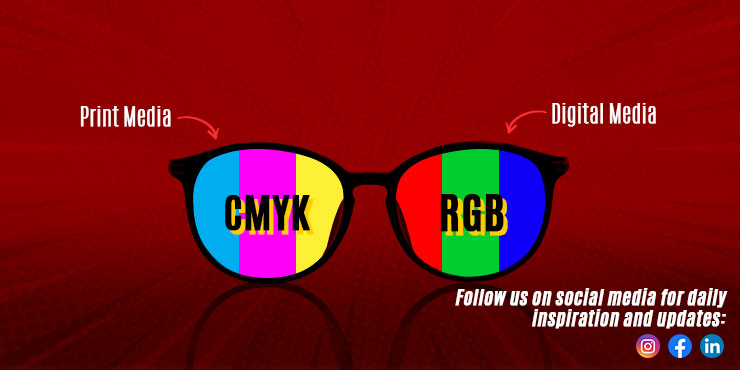CMYK and RGB are two color models that are commonly used in the printing and digital media industries. Understanding the differences between these color models is important for anyone working with color in these contexts.
CMYK stands for cyan, magenta, yellow, and key (black). It is a subtractive color model, which means that it is used to create colors by subtracting certain wavelengths of light from a white background. CMYK is used primarily in the printing industry, as it is the color model that is used by most printers to produce a full range of colors.
RGB stands for red, green, and blue. It is an additive color model, which means that it is used to create colors by adding certain wavelengths of light together. RGB is used primarily in digital media, as it is the color model that is used by most computer monitors, TVs, and other electronic displays to produce a full range of colors.
One key difference between CMYK and RGB is that CMYK has a limited color gamut (the range of colors that can be represented), while RGB has a much larger color gamut. This means that RGB is better suited for creating bright, vibrant colors, while CMYK is better suited for creating more muted, subtle colors.
Another difference between CMYK and RGB is that CMYK is a device-dependent color model, while RGB is a device-independent color model. This means that the colors produced by CMYK will vary depending on the specific printer or other output device being used, while the colors produced by RGB will remain consistent across different devices.
Here are a few examples of how CMYK and RGB are used in different contexts:
Printing: When printing a document or other printed material, the colors are typically created using the CMYK color model. This ensures that the colors will be accurately reproduced on the printed page.
Web design: When designing a website or other digital media, the colors are typically created using the RGB color model. This ensures that the colors will be accurately displayed on a wide range of electronic devices.
Graphic design: When creating graphics for print or digital media, designers will often work with both CMYK and RGB depending on the specific context. For example, they may create a design using the RGB color model in a graphic design program, and then convert it to CMYK before sending it to a printer.
In summary, CMYK and RGB are two important color models that are used in different contexts to create a wide range of colors. Understanding the differences between these color models is essential for anyone working with color in the printing and digital media industries.

